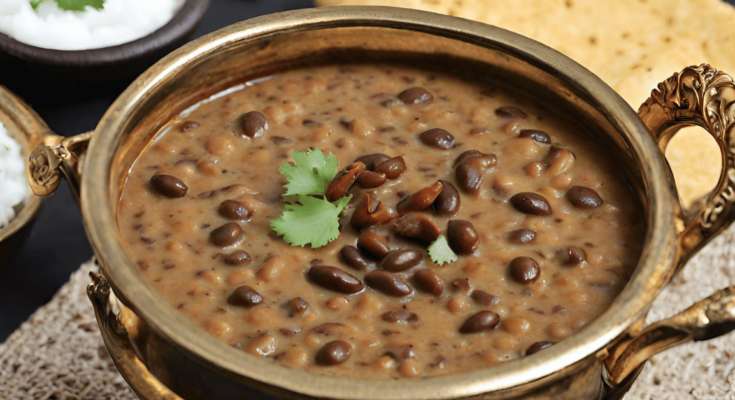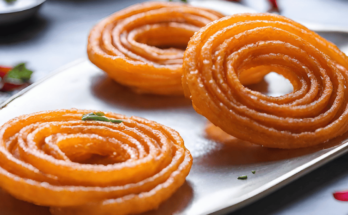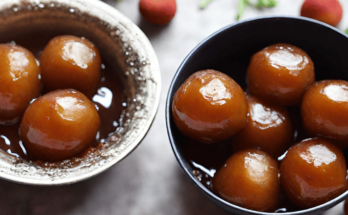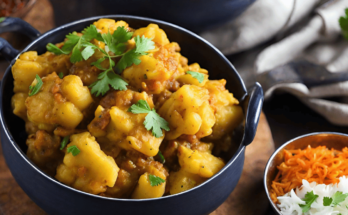Dal Makhani, a quintessential dish in North Indian cuisine, holds a revered place on dining tables across the globe. Its rich, creamy texture and aromatic flavors make it a favorite among food enthusiasts and novices alike. Whether you’re indulging in it at a fancy restaurant or savoring a homemade version, Dal Makhani never fails to tantalize the taste buds.
Origin and History
Dal Makhani traces its roots back to the Punjab region of India, where it was traditionally prepared in rural households. The word “Dal” translates to lentils, while “Makhani” refers to buttery, which perfectly describes the essence of this dish. Initially, Dal Makhani was a simple and humble recipe, cooked slowly over wood-fired stoves to develop its distinctive flavors.
Over time, Dal Makhani gained popularity beyond Punjab and became a staple in Indian restaurants worldwide. Its evolution saw the incorporation of various spices and cooking techniques, leading to diverse interpretations of the classic recipe. Today, Dal Makhani is not just a dish but a cultural symbol, representing the rich culinary heritage of India.
Ingredients
To recreate the authentic taste of Dal Makhani, you’ll need a combination of black lentils (urad dal), red kidney beans (rajma), tomatoes, onions, garlic, ginger, cream, and butter. The magic lies in the blend of spices, including cumin, coriander, garam masala, and dried fenugreek leaves (kasuri methi). These ingredients come together to create a harmonious flavor profile that is both comforting and satisfying.
Preparation Time and Cooking Method
Preparing Dal Makhani requires patience and attention to detail, as the lentils need to be cooked slowly to achieve the desired creamy consistency. The process begins with soaking the lentils and beans overnight to soften them, reducing the cooking time. Once soaked, they are cooked with aromatics like onions, garlic, and ginger until tender.
Next comes the tempering, where a medley of spices is added to enhance the flavor of the dish. This step is crucial for infusing the dal with layers of complexity and depth. Finally, the cream and butter are stirred in, imparting richness and velvety texture to the dish.
Selecting the Right Lentils
Choosing the right lentils is essential for achieving the perfect texture in Dal Makhani. Black lentils, also known as whole urad dal, are the primary ingredient and provide the dish with its signature creamy consistency. Red kidney beans add a contrasting texture and flavor, complementing the creaminess of the dal.
When selecting lentils, opt for high-quality, organic varieties for the best results. Look for lentils that are clean, uniform in size, and free from any debris or impurities. Soaking the lentils overnight not only softens them but also helps reduce cooking time and aids in digestion.
1: Soaking Lentils
Soaking lentils is a crucial step in the preparation of Dal Makhani, as it helps soften the legumes and reduce cooking time. To soak the lentils, rinse them thoroughly under cold water to remove any dirt or debris. Then, place them in a large bowl and cover them with enough water to submerge them completely.
Allow the lentils to soak for at least 6 to 8 hours, or preferably overnight. This extended soaking time ensures that the lentils absorb enough water to soften them, resulting in a creamy texture when cooked. Additionally, soaking helps break down the complex sugars present in the lentils, making them easier to digest.
Cooking Techniques
Traditionally, Dal Makhani is cooked slowly over a low flame, allowing the flavors to meld together and develop depth. However, modern cooking techniques have made it easier to prepare this dish in a fraction of the time. While some purists may prefer the traditional method, others opt for quicker alternatives like using a pressure cooker or Instant Pot.
Regardless of the cooking method, the key is to simmer the dal on low heat for an extended period to allow the flavors to intensify. If using a pressure cooker, cook the soaked lentils and beans with water until they are soft and tender. Then, proceed with the tempering and seasoning as per the traditional recipe.
1: Tempering and Seasoning
Tempering, also known as tadka or chaunk, is a quintessential step in Indian cooking that involves blooming spices in hot oil or ghee to release their flavors. For Dal Makhani, tempering adds depth and complexity to the dish, elevating it from ordinary to extraordinary.
To temper the dal, heat ghee or oil in a pan and add whole spices like cumin seeds, dried red chilies, and cloves. Allow the spices to sizzle and release their aroma before adding chopped onions, garlic, and ginger. Sauté until the onions are golden brown and fragrant, then add diced tomatoes and cook until they break down and form a thick gravy.
Seasoning is equally important in Dal Makhani, as it helps balance the flavors and enhance the overall taste of the dish. Essential spices like coriander powder, cumin powder, garam masala, and turmeric are added to the dal, along with salt to taste. Additionally, dried fenugreek leaves (kasuri methi) are crushed and sprinkled over the dal for a distinctive flavor.
2: Cream and Butter
Cream and butter are the secret ingredients that give Dal Makhani its luscious texture and indulgent flavor. Traditionally, heavy cream (malai) and unsalted butter (makhan) are added to the dal towards the end of cooking to enrich the dish. The creaminess of the dal is further enhanced by simmering it on low heat until it thickens to the desired consistency.
For a healthier alternative, you can use low-fat cream or substitute dairy cream with coconut cream for a vegan version of Dal Makhani. Similarly, you can reduce the amount of butter or use clarified butter (ghee) instead for a lighter option without compromising on taste.
Vegetarian and Vegan Options
While Dal Makhani is traditionally a vegetarian dish, it can easily be adapted to suit vegan dietary preferences. Simply omit the cream and butter or replace them with plant-based alternatives like coconut cream and vegan butter. The rest of the recipe remains unchanged, ensuring that vegans can enjoy this classic Indian dish without sacrificing flavor or authenticity.
Garnishing and Presentation
Garnishing plays a crucial role in enhancing the visual appeal of Dal Makhani and adding a burst of flavor to the dish. Common garnishes include chopped cilantro, sliced green chilies, and a drizzle of cream or butter on top. For an extra touch of elegance, sprinkle some crushed dried fenugreek leaves (kasuri methi) over the dal before serving.
When it comes to presentation, simplicity is key. Serve Dal Makhani hot with steamed basmati rice, naan bread, or roti for a wholesome and satisfying meal. Arrange the garnishes neatly on the side or sprinkle them over the dal for an inviting presentation that will impress your guests.
Pairing Dal Makhani with Accompaniments
Dal Makhani pairs perfectly with a variety of accompaniments, each adding its own unique flavor and texture to the meal. Steamed basmati rice is the classic choice, providing a neutral base that allows the flavors of the dal to shine through. Alternatively, you can serve it with freshly baked naan bread or roti for a complete Indian dining experience.
For a modern twist, consider pairing Dal Makhani with quinoa, couscous, or mashed sweet potatoes for a healthier alternative. You can also serve it alongside a crisp green salad or roasted vegetables to add freshness and crunch to the meal. The key is to experiment with different combinations to find the perfect pairing that suits your taste preferences.
Health Benefits
Despite its indulgent reputation, Dal Makhani offers a plethora of health benefits thanks to its nutritious ingredients. Lentils are a rich source of protein, fiber, and essential nutrients like iron, folate, and magnesium. They also have a low glycemic index, making them suitable for individuals with diabetes or blood sugar imbalances.
Additionally, the spices used in Dal Makhani, such as cumin, coriander, and turmeric, are known for their antioxidant and anti-inflammatory properties. These spices not only add flavor to the dish but also contribute to its overall health benefits. However, it’s essential to consume Dal Makhani in moderation, especially if you’re watching your calorie intake or following a specific diet plan.
READ MORE: https://recipereverie.com/aloo-gobi/
Cultural Significance
Dal Makhani holds immense cultural significance in Indian cuisine, serving as a symbol of hospitality, warmth, and togetherness. It is often prepared during festive occasions, family gatherings, and celebrations, where it brings people together around the dining table. The aroma of simmering dal and spices evokes nostalgic memories of home-cooked meals and cherished moments shared with loved ones.
In addition to its cultural significance in India, this dish has also gained popularity worldwide, thanks to the growing interest in Indian cuisine and culture. It has become a beloved comfort food for people of all backgrounds, transcending geographical boundaries and uniting food enthusiasts from diverse cultures.
Popular Variations About this Recipe
While the classic recipe for Dal Makhani remains timeless, there are countless variations and adaptations that cater to different tastes and dietary preferences. In Punjab, for example, some versions of Dal Makhani are made with a generous amount of butter and cream, resulting in an indulgent and decadent dish.
In other regions of India, you’ll find variations of Dal Makhani that incorporate regional spices and ingredients, giving the dish a unique flavor profile. For instance, in Gujarat, Dal Makhani is often made with a tadka of mustard seeds, curry leaves, and asafoetida, adding a touch of sweetness and tanginess to the dal.
Internationally, chefs and home cooks have put their own spin on Dal Makhani, experimenting with ingredients and techniques to create fusion recipes that cater to global palates. From Dal Makhani pizza to Dal Makhani tacos, the possibilities are endless when it comes to reinventing this classic Indian dish.
Tips and Tricks
Cooking Dal Makhani can be a rewarding experience, but it also requires some skill and know-how to achieve the perfect balance of flavors and textures. Here are some tips and tricks to help you master the art of making Dal Makhani like a pro:
- Use high-quality ingredients: Start with fresh, high-quality lentils, spices, and other ingredients to ensure the best possible flavor.
- Soak the lentils overnight: This helps soften the lentils and reduces cooking time, resulting in a creamy texture.
- Cook on low heat: Simmer the dal on low heat for an extended period to allow the flavors to develop and intensify.
- Don’t skimp on the butter and cream: These ingredients are essential for achieving the rich, creamy texture that Dal Makhani is known for.
- Taste and adjust seasoning: Dal Makhani should be well-seasoned with a balance of spices, salt, and acidity. Taste the dal as it cooks and adjust the seasoning accordingly.
- Garnish before serving: Fresh herbs, sliced chilies, and a drizzle of cream or butter add the finishing touches to the dish and enhance its visual appeal.
Storing and Reheating
Dal Makhani can be stored in the refrigerator for up to three days or frozen for longer-term storage. To store leftovers, allow the dal to cool completely, then transfer it to an airtight container and refrigerate or freeze.
When reheating Dal Makhani, gently heat it on the stovetop over low heat, stirring occasionally to prevent sticking and ensure even heating. You may need to add a splash of water or cream to loosen the dal and restore its creamy consistency.
Avoid reheating this dish in the microwave, as it can cause the cream to separate and the texture to become grainy. Instead, take the time to reheat it slowly on the stovetop for the best results.
Dal Makhani Around the World
While Dal Makhani is a beloved dish in India, its popularity extends far beyond its borders, thanks to the global appeal of Indian cuisine. In countries like the United States, the United Kingdom, and Canada, Indian restaurants serve this dish as a staple on their menus, catering to the diverse tastes of their customers.
In recent years, this dish has also gained traction in countries like Australia, New Zealand, and South Africa, where Indian expatriates have introduced it to local communities. Its rich, comforting flavors and hearty ingredients make it a hit among people of all backgrounds, making it a truly global dish.
Famous Dal Makhani Recipes
Over the years, many chefs and food enthusiasts have shared their versions of Dal Makhani, each adding their own unique twist to the classic recipe. Celebrity chefs like Sanjeev Kapoor, Tarla Dalal, and Vikas Khanna have all contributed their take on this beloved dish, incorporating innovative ingredients and techniques to create memorable culinary experiences.
Some notable variations include this recipe with a hint of smokiness from charcoal, Dal Makhani infused with truffle oil for a touch of luxury, and Dal Makhani topped with crispy fried onions for added texture and flavor. Whether you prefer a traditional recipe or a modern interpretation, there’s no shortage of inspiration when it comes to Dal Makhani.
Conclusion
In conclusion, Dal Makhani is more than just a dish – it’s a culinary journey that celebrates the rich flavors and vibrant culture of India. From its humble origins in Punjab to its global popularity today, Dal Makhani has captivated the hearts and palates of food lovers around the world.
Whether you’re craving a comforting bowl of dal on a cold winter’s day or looking to impress guests at your next dinner party, Dal Makhani is sure to satisfy your cravings and leave you longing for more. So why wait? Roll up your sleeves, gather your ingredients, and embark on a flavorful adventure with Dal Makhani today!
Frequently Asked Questions (FAQs)
- What is Dal Makhani?
- Dal Makhani is a popular Indian dish made from black lentils (urad dal) and red kidney beans (rajma), cooked with spices, cream, and butter. It is known for its rich, creamy texture and aromatic flavor.
- Is Dal Makhani vegetarian?
- Yes, Dal Makhani is a vegetarian dish. It does not contain any meat or animal products, making it suitable for vegetarians.
- What are the key ingredients in Dal Makhani?
- The primary ingredients in Dal Makhani include black lentils, red kidney beans, onions, tomatoes, garlic, ginger, cream, and butter. It is seasoned with a blend of spices such as cumin, coriander, garam masala, and dried fenugreek leaves.
- Can Dal Makhani be made vegan?
- Yes, Dal Makhani can be made vegan by omitting the cream and butter or replacing them with plant-based alternatives. Coconut cream and vegan butter are commonly used substitutes for dairy cream and butter in vegan versions of Dal Makhani.
- How long does it take to cook Dal Makhani?
- The cooking time for Dal Makhani varies depending on the method used and whether the lentils are soaked beforehand. On average, it takes about 1.5 to 2 hours to cook Dal Makhani on the stovetop. Using a pressure cooker can significantly reduce the cooking time to around 30 to 40 minutes.
- What is the best way to serve Dal Makhani?
- This dish is traditionally served hot with steamed basmati rice, naan bread, or roti. It can also be paired with other Indian dishes such as vegetable curry or tandoori chicken for a complete meal.
- Can I freeze Dal Makhani?
- Yes, this dish can be frozen for later use. Allow the dal to cool completely, then transfer it to an airtight container and freeze for up to three months. When ready to eat, thaw the dal in the refrigerator overnight and reheat it on the stovetop until heated through.
- How do I reheat leftover Dal Makhani?
- To reheat leftover Dal Makhani, gently heat it on the stovetop over low heat, stirring occasionally to prevent sticking. You may need to add a splash of water or cream to loosen the dal and restore its creamy consistency. Avoid reheating Dal Makhani in the microwave, as it can cause the cream to separate and the texture to become grainy.
- Is Dal Makhani spicy?
- The level of spiciness in this dish can be adjusted according to personal preference. It typically has a mild to medium level of spice, but you can increase or decrease the amount of chili powder or fresh chilies to suit your taste.
- Can I make Dal Makhani ahead of time?
- Yes, this dish can be made ahead of time and stored in the refrigerator for up to three days. It actually tastes better the next day as the flavors have time to meld together. Simply reheat it on the stovetop before serving.





One Comment on “Tasty Dal Makhani Recipe | Rich & Creamy Delight”